Emails – Letters – Tweets – Facebook – Instagram – Kit questions
Email us at inbox@skyatnightmagazine.com
MESSAGE OF THE MONTH
Red Planet on a mobile
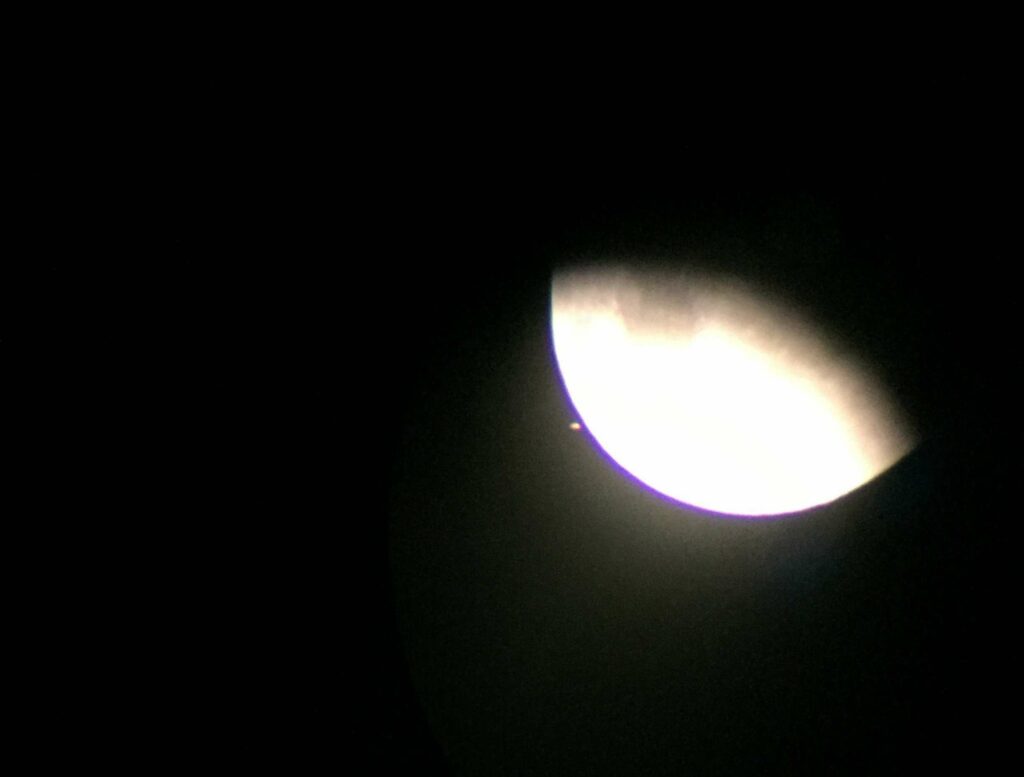
Ok, it’s not taken by the James Webb Space Telescope and there’s a bit of an overexposed Moon, but this is my first ever picture of Mars! Having been inspired by Pete Lawrence’s article (‘Capture’, December 2022), on the morning of 8 December I dug out my vintage Meade ETX 70 refractor and took this picture of the lunar occultation of the Red Planet through the eyepiece, using a fairly basic mobile phone.
That’s a fantastic memory of the recent Mars occultation, Bill, well done. Stay with us for more imaging advice from Pete in the coming year! – Ed.

The ‘Message of the Month’ writer will receive a bundle of two top titles courtesy of astronomy publisher Philip’s: Nigel Henbest’s Stargazing 2023 and Robin Scagell’s Guide to the Northern Constellations
Winner’s details will be passed on to Octopus Publishing to fulfil the prize
Vespera success
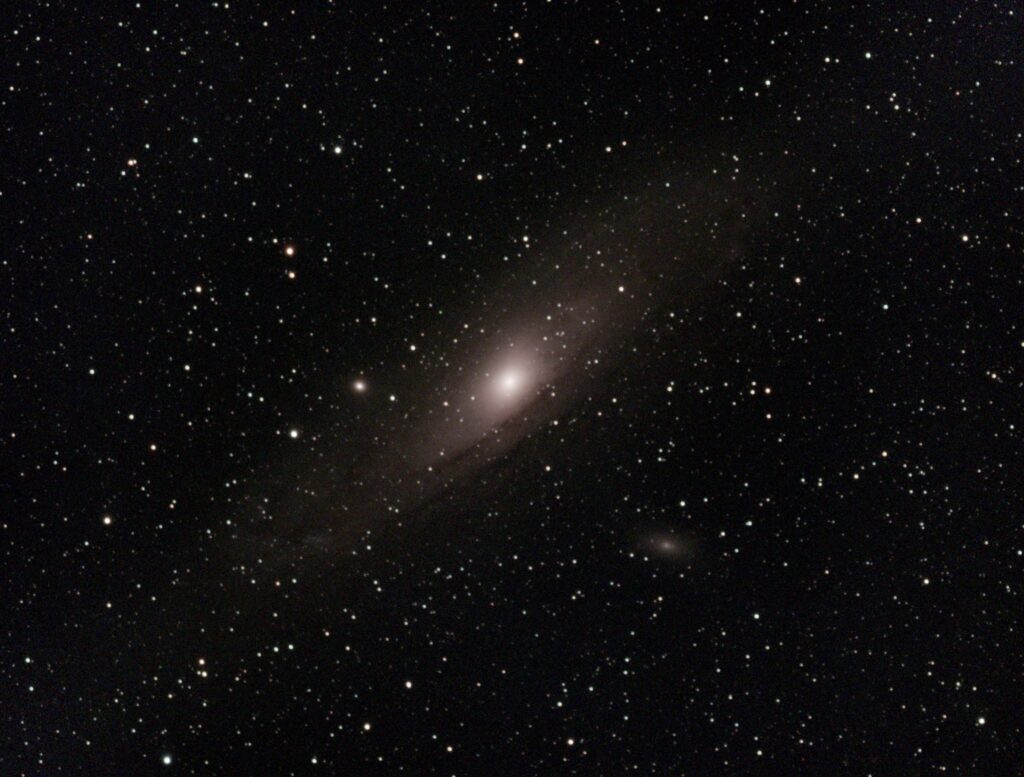
As an original backer of the Vaonis Vespera smart telescope project on Kickstarter I have been in possession of one since summer 2022, and I was very interested to read your review (‘First Light’, January 2023 issue). As you say, it is very easy to set up, and I can confirm that the Singularity app is straightforward to use. I have managed to use the Vespera a few times, but I have been restricted by cloud and weather conditions.
When Vaonis recently released the Mosaic mode update I couldn’t wait to try it out. My first cloudless night came on 7 December, but it wasn’t ideal due to a full Moon. Despite this, I had a go and I have attached the final, unedited image of M31, the Andromeda Galaxy, from that observation to give you an idea of what is possible. It was completed at 9:23pm with the City Light Suppression filter attached. One thing to note with the Vespera is that when there is a 2°C change in temperature the unit will stop because it needs to be refocused, so if you’re capturing a mosaic the Vespera could stop imaging mid-way through.
Recycling in space?
While watching the recent episode of The Sky at Night about possible multiverses (‘The Multiverse of Mystery’), I wondered if black holes are simply the rubbish or recycling bins of space. What do people think?
Lining up
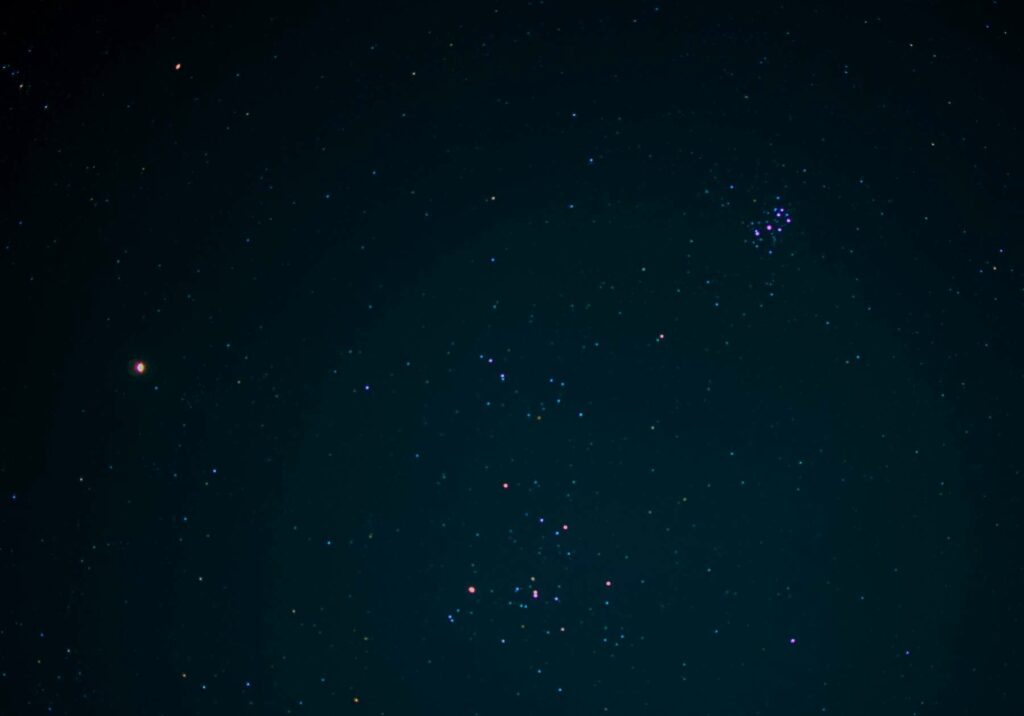
I’m fairly new to astrophotography and I love reading BBC Sky at Night Magazine. I just wanted to share with you this wide shot of Mars, the Hyades and the Pleiades clusters, which I took on 30 November.
Worth a wait
I managed to see the lunar occultation of Mars on 8 December, despite the thin cloud in north west England, and I was thinking it must be a rare event to get an occultation at opposition with a full Moon. I’ve attempted a rough estimate of when this happens and would be interested to know if there are any official sources for future occultations like this, to compare it against.
I’ve worked out that Mars oppositions occur roughly every 26 months, and there is roughly a 1/30 chance of a full Moon, so both things happen together every 26 x 30 = 780 months. According to Google there are 105 Mars occultations every 50 years, which is one every 4,171 hours. This morning’s event lasted for exactly one hour, but Mars passed right behind the full diameter of the Moon, so I’ve assumed that the average occultation lasts half an hour. The probability of an occultation is therefore 0.5 ÷ 4,171, so the frequency of all three events coinciding is approximately once every 780 x 4,171 ÷ 0.5 months, which is about once every half a million years. I’m glad I got up early to watch it now!
Valley views
Characterising gravity by reference to ‘valleys’ in spacetime – that is, by using an allusion that is itself only meaningful by reference to the everyday understanding of gravity – is a fairly pointless self-referential characterisation, is it not? It is a waste of people’s intellectual effort – why not do us all a favour and just delete it?
Upgrade & go
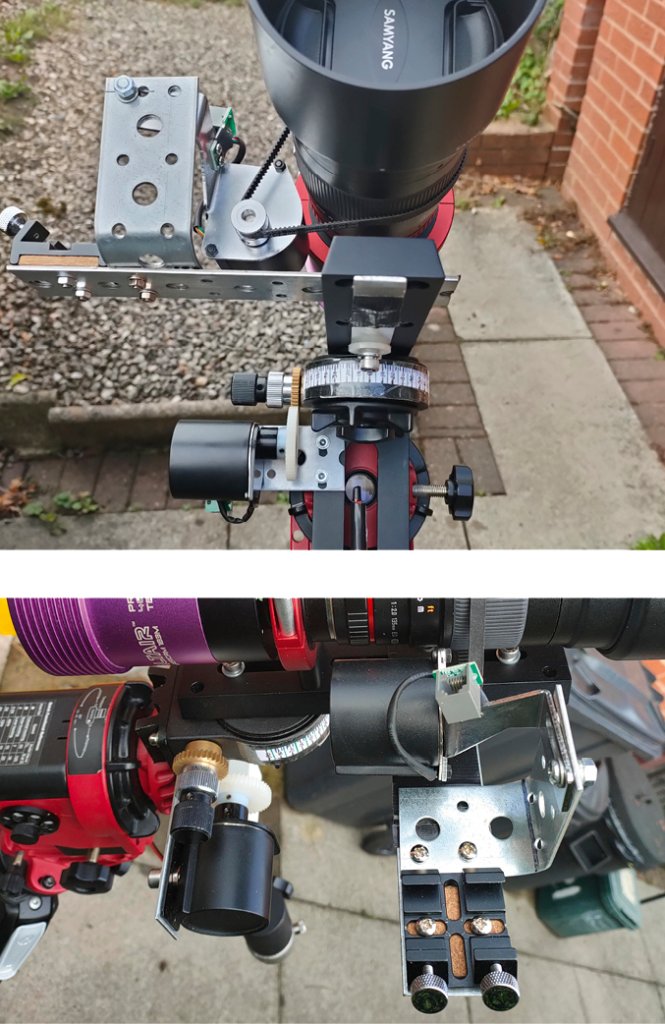
Here is a simple upgrade I made to my grab-and-go imaging setup, which is based around a Samyang f/2.0 135mm lens, a Sky-Watcher Star Adventurer mount and a Manfrotto 055 tripod. The upgrade was made using bits that I had lying around and some I purchased online, and the total cost was less than £20. It consists of an electric focuser (an EQ3-2 RA drive motor); a motorised declination axis (EQ3-2 dec. drive motor and gear); and a permanent LED light for polarscope illumination. The motors are controlled by the EQ3-2 hand control declination buttons, via a changeover switch.
All the upgrades have been done so that they can easily be dismantled to allow the EQ3-2 components to be reinstalled on my EQ3 mount in a matter of minutes, if required. It can also be used with my WhiteCat 51 and Lunt LS50 telescopes, which have helical focusers. The upgraded setup means I can now make fine adjustments without disturbing the mount, but of course there is still the question of automating the right ascension axis. I thought that maybe I could do this by injecting signals into the autoguide port on the mount, but I need to work out how I could do this.
Tweet
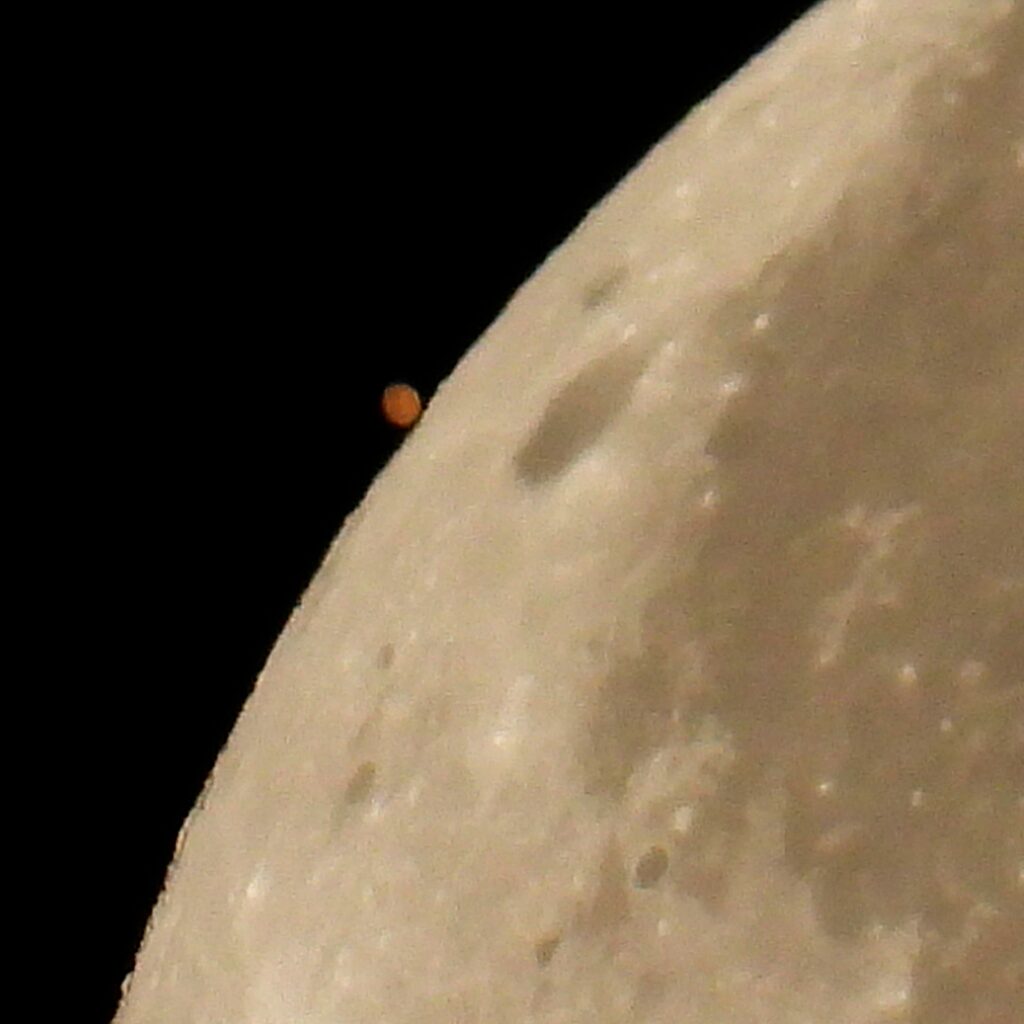
Epiphany Appleseed @FunkyAppleTree • 8 December
LONDON: When the Moon & Mars kissed… #Mars #occultation #FullMoon @StormHour @ThePhotoHour
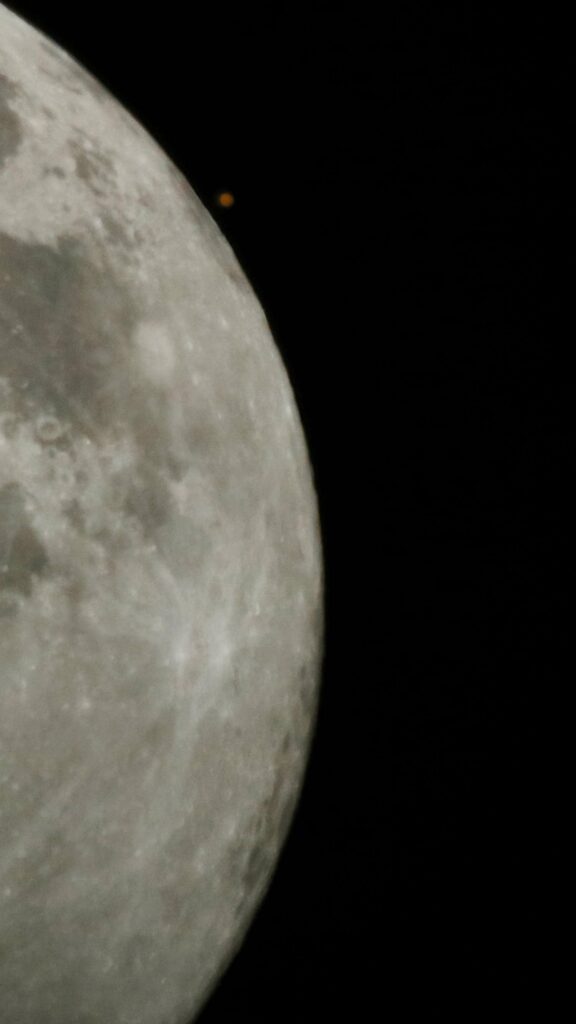
astroyyc • 7 December
Here is my first look at the planet Mars coming out of occultation with the Moon! Unfortunately I just barely missed the start (kids swimming lessons!) The seeing was not great through thin cloud. Calgary, Canada 9:01:45 MST
@practicalastrophotography @optcorp @bbcskyatnightmag
SOCIETY IN FOCUS
Founded in 1972 in Bletchley by Richard Lambert, Milton Keynes Astronomical Society (MKAS) subsequently began meeting in Bradwell Abbey. But in 1997, the society returned to Bletchley for its meetings.
MKAS currently meets fortnightly on Friday evenings at 8pm at Rectory Cottages, Bletchley, or occasionally online. The varied programme ranges from practical astronomy to space exploration, with guest speakers including the Richard Lambert Memorial Lecture, presented annually since 1990. There are also less formal meetings at which members can present results or progress reports relating to their projects, as well as our annual Astroquiz. In addition, our dark sky observation weekends have continued most years, usually in Shropshire, plus social events and trips.
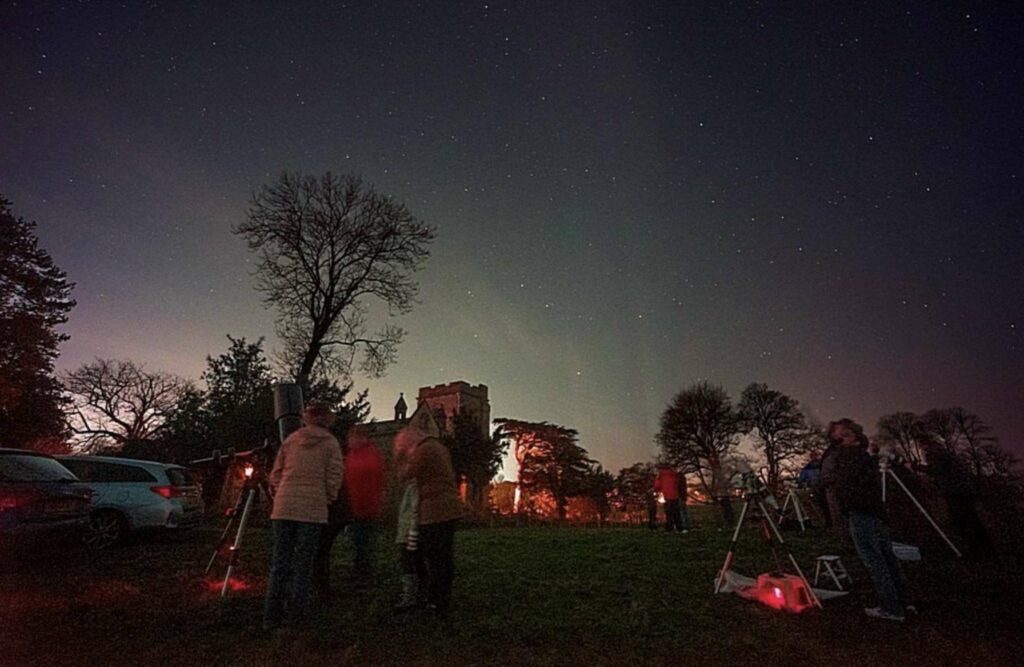
In 2022, MKAS celebrated its 50th anniversary, which included the ‘MKAS50 Open Day’ on 9 July 2022, an exhibition with demonstrations of daytime astronomy. The official opening was by Councillor Amanda Marlow, mayor of Milton Keynes. There was also a visit by the BBC Three Counties Radio programme Treasure Quest.
For more information on what we do and how to get to one of our meetings, visit our website.
SCOPE DOCTOR
Our equipment specialist, Steve Richards, cures your optical ailments and technical maladies
Email your queries to scopedoctor@skyatnightmagazine.com
I’m struggling to keep my Celestron CPC1100 telescope aligned – it gets worse over time and pauses when reversing direction. I’m controlling it with Sky Safari, and there is some backlash. How can I fix these problems?
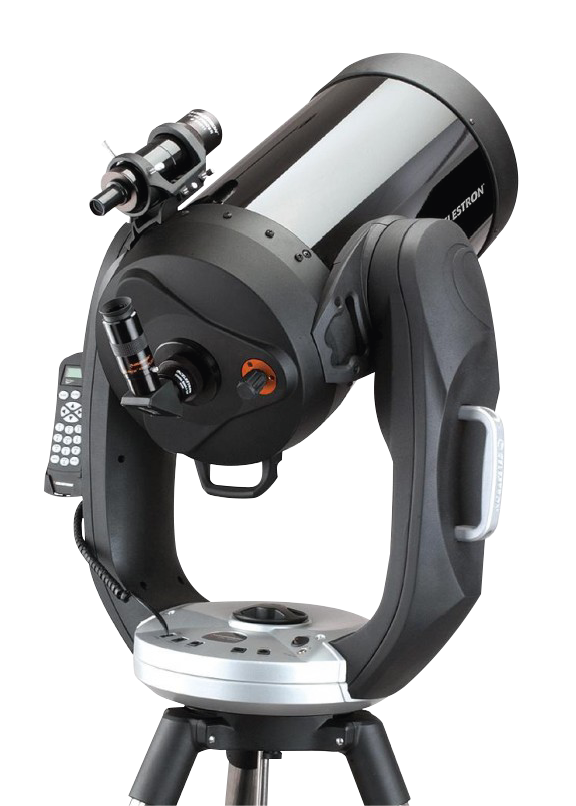
As the Celestron CPC1100 mount uses a geared drive system, there is always the propensity for slackness in the gear mesh, resulting in backlash. It sounds like you have backlash in your altitude axis as a minimum, and that your telescope is slightly back heavy. To aid both initial alignment and Go-To accuracy, you should ensure that the telescope is correctly balanced with its accessories installed. Balance can be achieved by disengaging the altitude clutch and manually moving the telescope up and down while checking the balance. Any discrepancy can be compensated for by using a balance bar or magnetic weights. The anti-backlash settings can then be adjusted to give the same value in both positive and negative directions, as described on page 22 of the telescope’s manual.
Final movements for alignment should always be carried out by using the up and right buttons on the hand controller, irrespective of the view through the eyepiece.
Steve’s top tip
How can I alter my telescope’s magnification?
The magnification of a telescope is worked out by dividing the focal length of the telescope by the focal length of the eyepiece in use. So, for example, a telescope with a focal length of 750mm used with an eyepiece of 15mm focal length will have a magnification of 50x.
You cannot alter the focal length of a telescope, but you can change the eyepiece to one with a longer or shorter focal length. With the same telescope, an eyepiece with a focal length of 10mm would yield a magnification of 75x, while an eyepiece with a focal length of 25mm would give 30x.
Steve Richards is a keen astro imager and an astronomy equipment expert